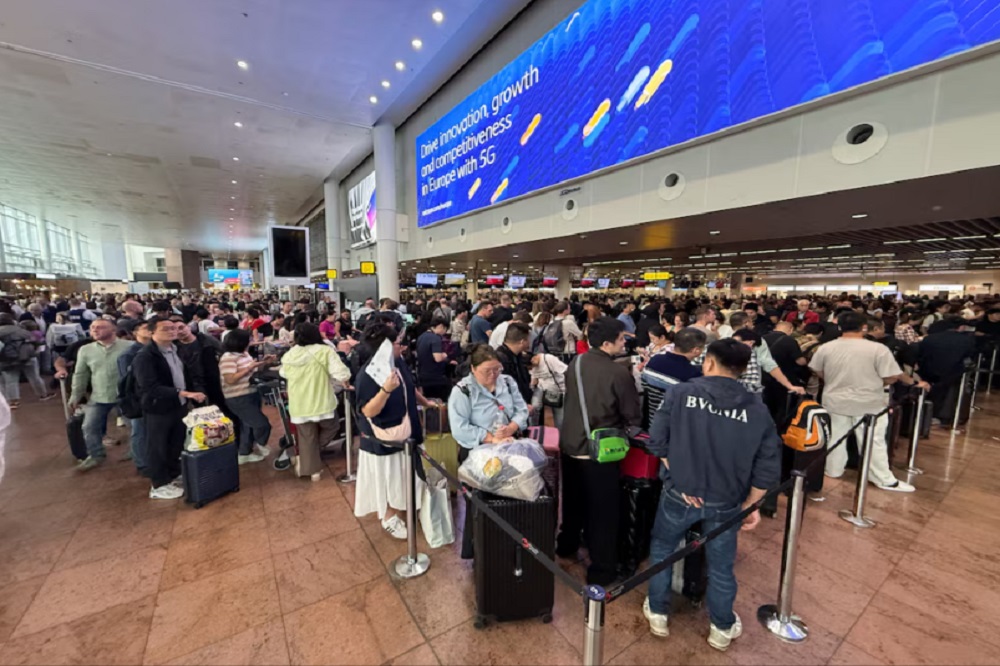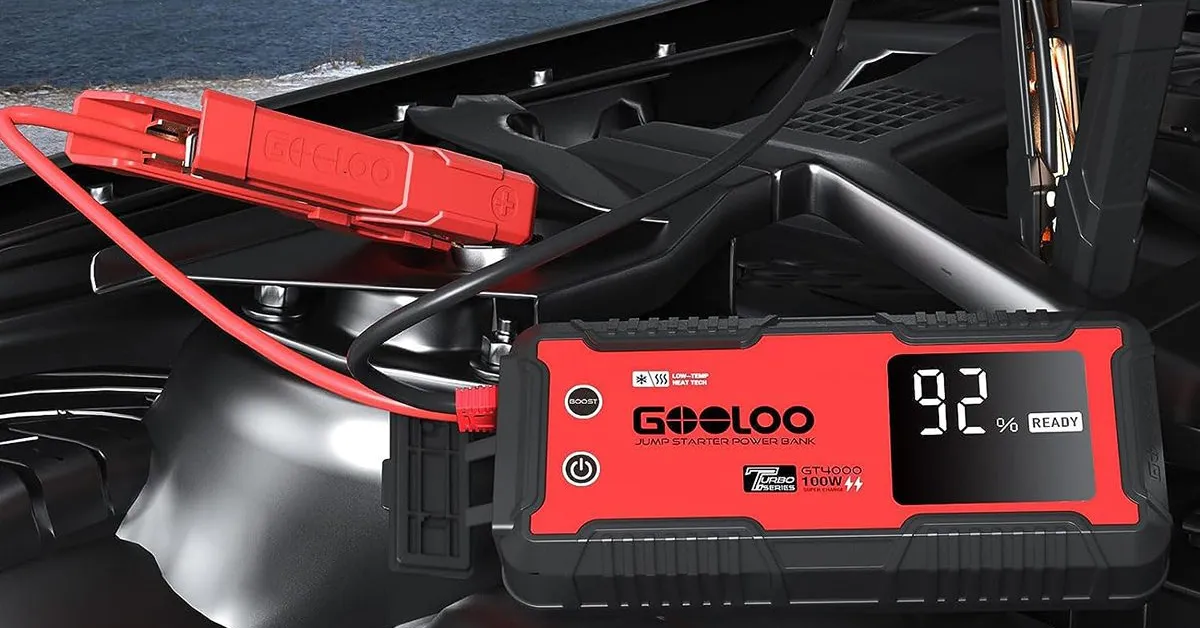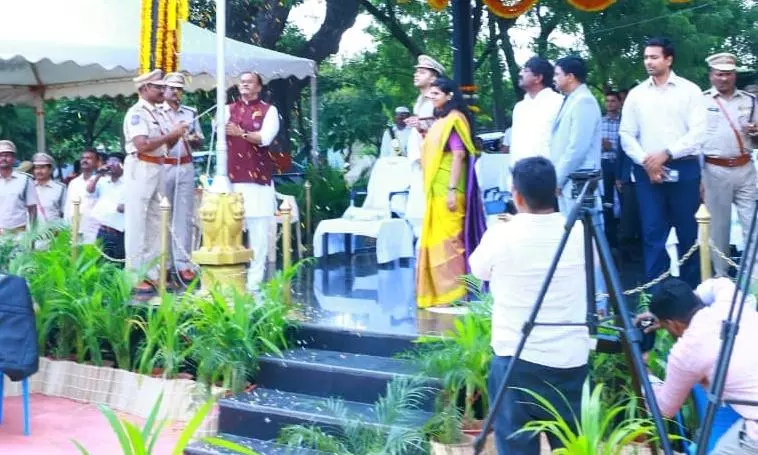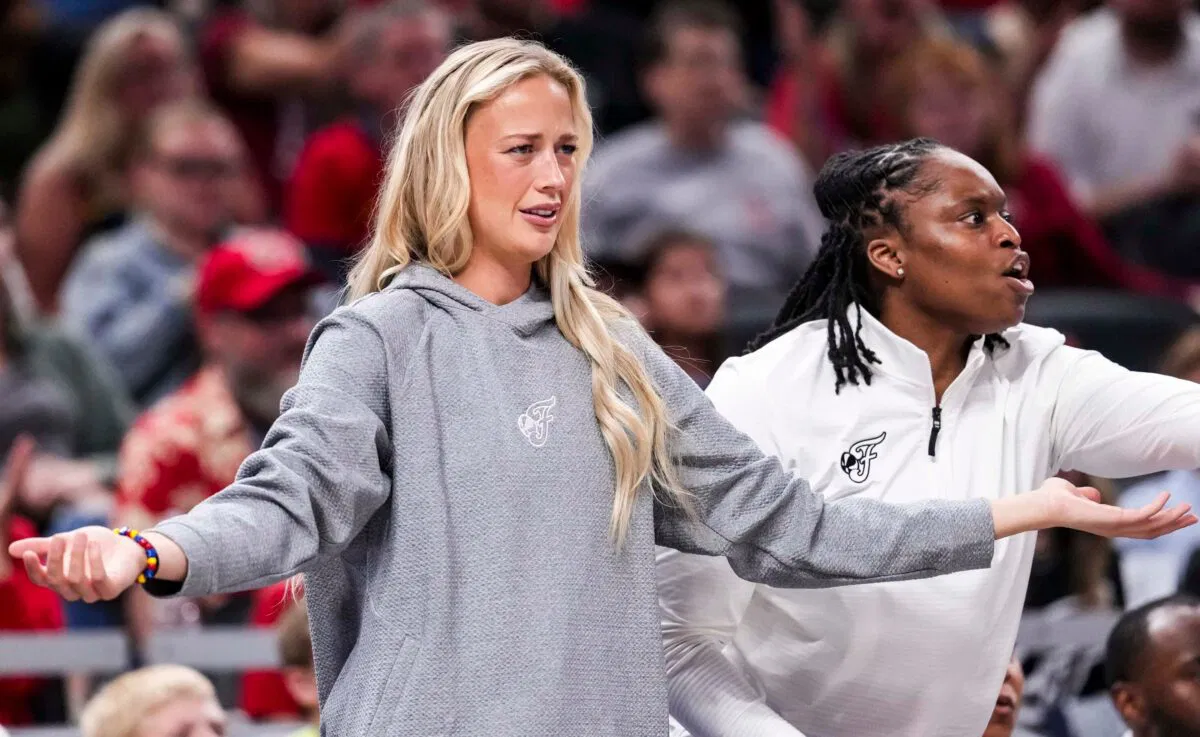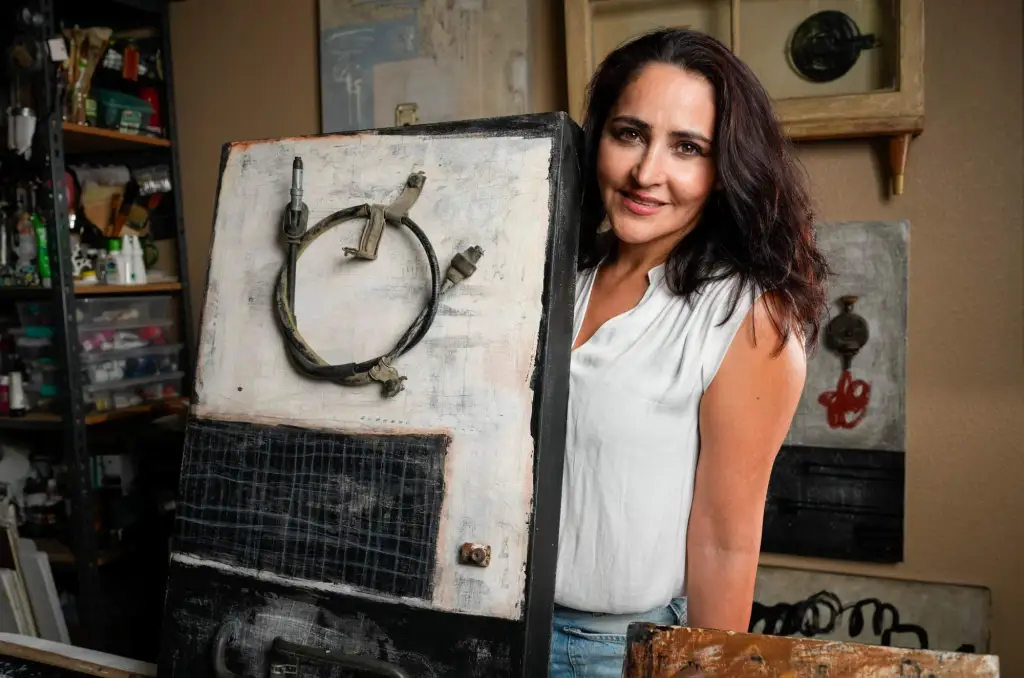
Art classes were tough to come by as a kid growing up in Tijuana, but when a cousin came to live with Ana Maria Herrera, things shifted. The cousin moved in to attend a design school and an elementary school-age Herrera was watching her work.
“I noticed that she was doing some drawings, and I fell in love with it. I said, ‘That’s what I want to do,’ and that’s, eventually, what I did,” she says. “In those days, we were driving really young, at the age of 13. I was a quiet girl, and I used to be dedicated in school, but what I really wanted was the after-school classes. So, I would drive and I would fill up my afternoon — if it wasn’t sewing clothes, it was clay classes or photography classes. When that wasn’t enough, I had to come over here to study it.”
Her studies eventually continued at San Diego State University, where she earned her bachelor’s degree in applied arts and sciences. A multidisciplinary visual artist, Herrera creates assemblages and installations, and her work includes painting, photography, sewing, carpentry and video. Influenced by the realities of life along the U.S.-Mexico border, she uses her work to encourage dialogue about diversity, culture, collaboration, migration, identity, and coexistence.
A selection of her pieces is being featured as part of San Diego Design Week, an annual design festival continuing through Sunday and inviting designers and artists to create in ways that address social, environmental and civic issues in ways that bolster communities and to see design as a way to build on equality and change.
“Border Echoes: Art as Resistance and Reclamation” features between 10 and 15 of Herrera’s nearly 100 pieces, using found and discarded materials, like rusted metal, weathered wood, glass or textiles. Her mixed media works will be on display from 10 a.m. to 5 p.m. Sunday at Nissan Design America (9800 Campus Point Drive in La Jolla). Registration is free.
Herrera, 57, lives in Chula Vista with her husband and has also spent the past 25 years creating binational community projects in partnership with students from Mexico and the U.S.; led a pilot program at The Guggenheim that was supported by UNICEF to support adolescents who were experiencing abuse in learning photography to develop freelance careers that could give them financial independence; and is also the founder of ArtisAna Workshops, where she continues to teach art, in addition to her own participation in artist cohort and public art programs.
Q: What drew you to a career as a visual artist?
A: I did it all, except dance, because I grew up in a family where that was probably one of the main things to know, to learn everything, all the skills that you could. I felt more connected to the visual side since I was very young; it totally pulled me in. As I was growing up, I had to learn carpentry, I had to learn welding, I had to learn everything. I had to learn acrylics, oils, anything that I could get my hands on. I started with photography. I used to leave high school and drive, like, 40 minutes away from home or from school to take photography classes at a different school. I would go to the principal and just ask for a favor. I wasn’t a student there, but I was so fond of it that I ended up in a photography club in Tijuana. From there, I ended up in photography clubs up here, and I ended up studying here, too. I studied at San Diego State, and I took everything that I could. Everything. One thing leads you to the other, and it’s always something more.
Q: What is “Border Echoes,” and how did the idea for it come about?
A: “Border Echoes” speaks to the reverberation of the border in our daily lives, and the way its presence shapes identity and memory, and even how we dream about the future. The word “echoes” suggests that these stories are not always visible, but they are felt. They travel through generations and this exhibition is about reclamation and turning (those stories) into something we can see, feel, and talk about.
What I love about Chula Vista …
My neighbors. They’re always very nice, kind. I love my neighbors and everything here. It’s calm and people are very nice and friendly.
Q: What was your process for putting it together, from concept to final execution?
A: All of these (materials) carry a story — the rust, the cracks, the scratches. There’s resilience, so when I incorporate them into the assemblages, I’m giving them a second life and honoring the histories they hold. It’s a way of saying that nothing and no one is truly disposable. In some other pieces, I might put them inside a wooden box, covering them with a window, when I feel like the composition asks for it. I feel like the components are part of a story, a second life for them.
Q: The descriptions of this exhibition talk about your connection to the San Diego-Tijuana border region. Can you talk a bit about that connection? How would you describe what your experience has been like?
A: It has given me a perspective, like a duality, to cultures, to systems, to languages. It gives you a deep sense of belonging at both places. It’s a constant crossing, not just physical, but emotional. In a sense, my work transforms this tension into a visual language using discarded objects, like the metal, the wood, the textiles that have crossed, just like we do as people. Each piece becomes a witness to this movement and a way to hold memories.
Q: How would describe your point of view as an artist? And how would you say your experience in this border region has contributed to shaping your artistic point of view?
A: I believe that what I make resembles what we live here. It’s a language, it’s a way of speaking, for me. It talks and tells unique stories in a specific space because it has these objects in it that are old and found and have their own scars. I feel like this border is a space where so many things happen — good, beautiful, sad, everything — and I always find a connection. I try to give a voice to those that don’t have a voice by bringing out those pieces and showing them what people might discard. I find beauty in them and put them in a place where I honor them because I feel like we, as human beings, should honor people’s lives.
Q: When thinking about the current actions we’re seeing in the enforcement of immigration policies, in what ways do you see your work as a form of resistance?
A: No, I’m very quiet on that part. Even though it might be felt like a resistance, my work is not loud protest. It’s more of quiet insistence. Transforming what is discarded into something dignified and beautiful.
Q: What has your work taught you about yourself?
A: Oh, a lot of resilience, love, a lot of acceptance. And, to treat myself kindly.
Q: What is the best advice you’ve ever received?
A: When I was young, I would have really liked somebody telling me, “Don’t stress too much about things,” you know what I mean?
Q: What is one thing people would be surprised to find out about you?
A: I don’t know, I’m very normal. I usually stay at home a lot, and I love it. I enjoy being alone. Artists are like that. I just look forward to being in my space.
Q: Please describe your ideal San Diego weekend.
